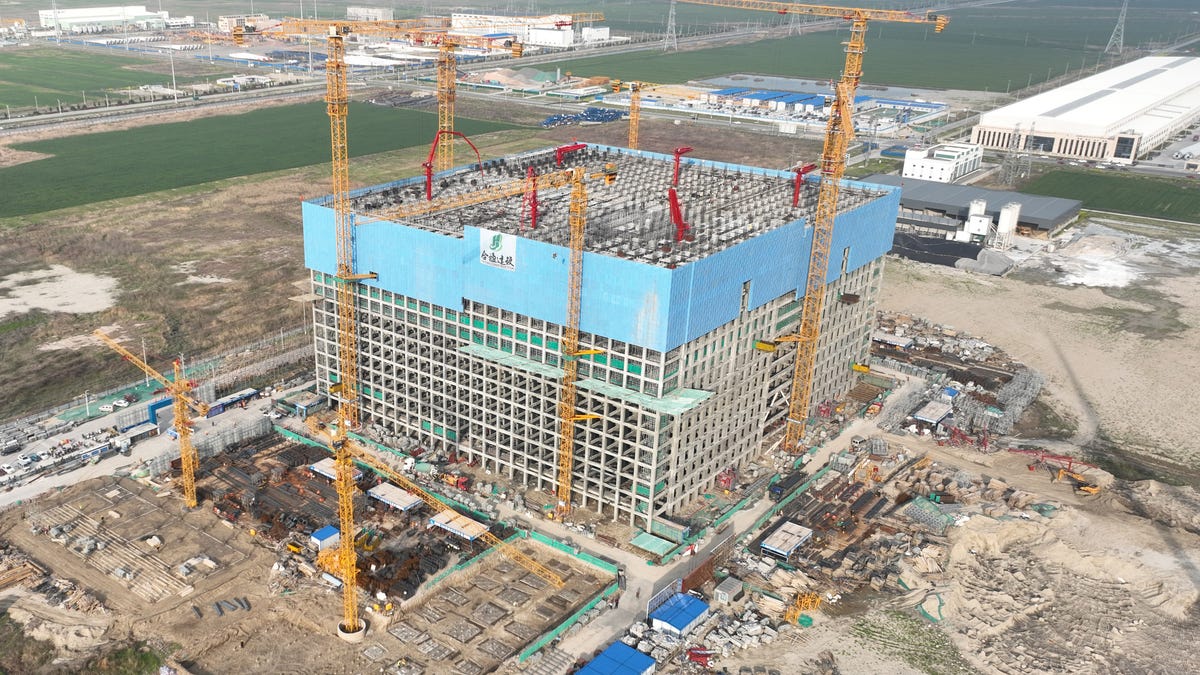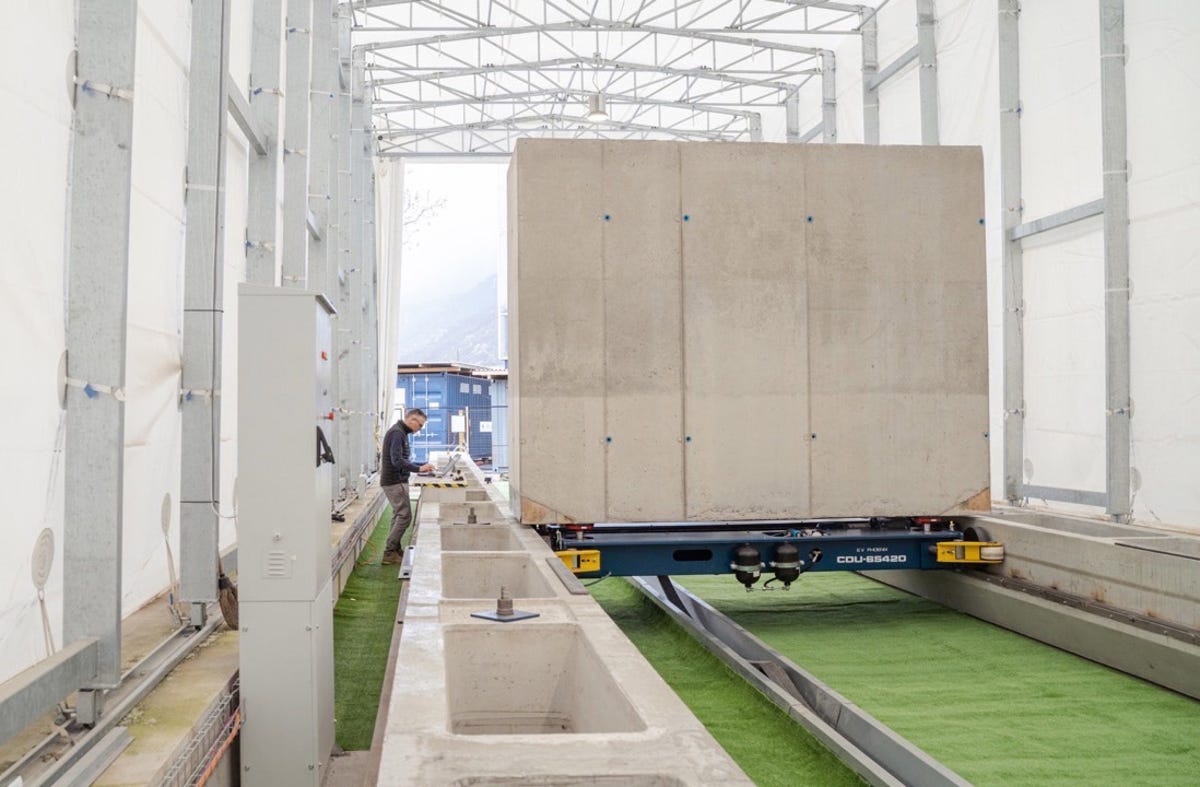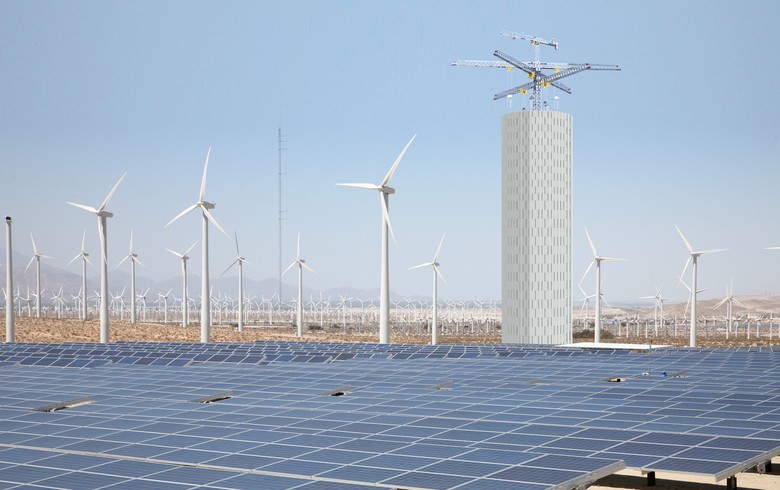Believe it or not, what you are seeing is a giant battery, not an apartment!
- Tram Ho
In Rudong County, Nantong Township, Jiangsu Province, China – a building is springing up where giant concrete blocks weighing 24 tons are raised during the day and lowered at night.
This building is not an apartment building but a giant battery that stores energy using gravity instead of chemistry.
And this is one of two investment locations of Energy Vault company – the other is located in Snyder, Texas, USA.

Photo: Energy Vault
Energy Vault had previously tested its technology on a smaller scale at its headquarters in Switzerland.
2 systems are under construction much larger. The system in China is housed in a 400-foot-tall (about 122 meters) building and will have a storage capacity of 25 MW – enough to power 3,400 homes for 24 hours, and the system should be completed by June 2023.
The US system is housed in a 460-foot (about 160-meter) building but is narrower than the one above and helps deliver 18 MW.
The way the systems work is as follows. The concrete blocks measuring 3.5 x 2.7 x 1.3 meters are lined up side by side like dominoes waiting for the trolley to take it into the elevator to raise or lower.

Photo: Energy Vault
During the day they are lifted by a solar-powered elevator to the top 8 floors of the building to store energy and at night they will be lowered to the corresponding lower 8 floors to generate energy.
Each concrete block will maintain a lowering speed of 1.9 m/s (6.84 km/h) and generate electricity. According to Energy Vault, 80% of solar electricity can be stored this way – only 20% is lost due to factors of friction.
It should be noted that most of the electricity storage uses energy batteries – which will gradually lose capacity after a few years of operation. But gravity storage can last much more years.
After all, cost will be a major factor in determining which storage technology prevails.
According to the U.S. Department of Energy, storing electricity by gravity is relatively expensive in small systems and only economical in systems that can generate energy for a relatively long period of time – as little as 10 hours. .
China is expected to provide additional funding for Energy Vault to build at least two new facilities with 40 to 60 times more storage capacity than the one in Rudong.

Photo: Energy Vault
Source : Genk
